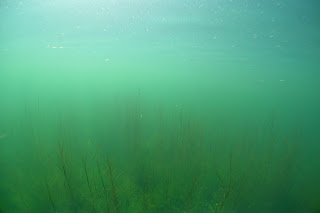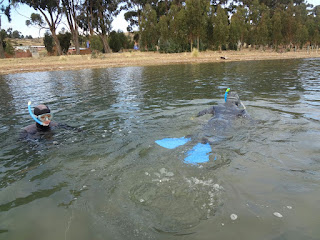 |
| The water in the area is not anymore green but not yet clear |
Today was a
long day, early in the morning we went out to the lake near Puerto Perez, it
seems that we are a little bit late, most of the frogs are already decomposed,
the small sample of 106 dead frogs we collected yesterday were in very bad
conditions, probably more than one week already dead. Today going to the south
by boat we found some dead frogs, not so many as yesterday, the man from the
boat told us that the birds ate the frogs and others just decomposed.
 |
| Dead frog found in the shore of the lake |
Even that
we found some frogs that were in the shore of the lake, and not just that, but
also several dead birds and mostly juveniles, not sure about the reason of this
but probably can be associated to this phenomenon? At the moment we just took
some samples to analyze in the future.
 |
| one of the dead birds in the shore of the lake |
We also
wanted to know how was the situation in the center of the “lago menor”. For that
we were diving in this area for some minutes and where a couple of years ago
was common to see several frogs, we just found dead frogs, not so many as in
the shore, and also these frogs were not so decomposed as the others and we
think that these frogs have from two to five days that are dead and some of
them even the same day. We think that probably these frogs were able to survive
the weeks when the lake was with the problem but they died some days after.
Unfortunately
we did not find any living frog in all this area, this is the first time we found
100% of the frogs dead, a couple of years ago we found in other area about 80%
of the frogs dead, but never like this… we are not sure if there are still live
frogs and we are planning now to monitor this area in the future to see if
there were some strong enough frogs that were able to survive.
 |
| One of the forgs that were dead in the center of the lago menor |
We also
came back with more questions and concerns, but we also saw people and
institutions that are interested to help with this situation and we really hope
that we can work together to try to save this species in this area.
 |
| swabing a dead frog for BD analysis |
Now we need
to start analyzing the samples and the data and to see what are going to be the
next steps and we think everybody has something that can do and we really hope
that we can change this situation for a future for this species.












